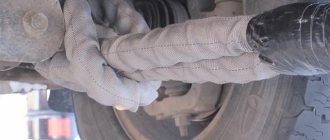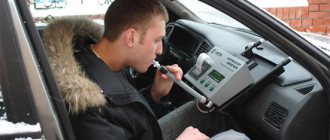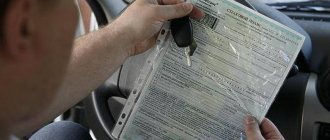Loaders, like excavators and dump trucks, are among the most popular among special equipment. The machines can be used on a construction site, in a production workshop, warehouse, or logistics center. Today, having a permit to drive a forklift, you can find a sought-after, high-paying job. Modern models are equipped with convenient levers and pedals, which greatly simplifies the control of front-end loaders and forklifts, both with manual (manual) and automatic (automatic) transmissions.
Types of forklift control levers
The mechanisms responsible for the movement, control and stopping of equipment are conventionally divided into the following groups:
Travel levers
A loader with a manual transmission and an automatic transmission with mechanical gear selection is equipped with two shift knobs - one for selecting the direction of travel, the second for selecting a gear. Using these controls, you can move forward/backward and change speed - two to four gears for moving forward and one to two for moving backward.
If you set the driving direction switch lever to the “R” position, the equipment will begin to move backwards, a special signal will sound, the headlights will light up, or the reverse signal will turn on.
To start moving and change the direction of movement of a self-propelled material handling machine, the brake pedal must be pressed before switching the lever. To switch the direction back and forth and vice versa, the machine must be completely stopped.
Gear shift lever
Before starting to operate the gear shift lever (for a fully automatic transmission), the brake pedal is depressed. After the pressure on the brake pedal is released, the car begins to move slowly. In this case, the speed shift knob is in any position except neutral. The brake pedal is fully released only after you are completely ready to move.
The equipment is equipped with one shift lever located on the steering column. There are two to four gears for forward movement and one to two for reverse movement. In the “R” position, the reverse lights come on or the horn sounds. Switching the direction of movement of the vehicle from front to rear and vice versa is carried out only after the vehicle has completely stopped.
Manual control of the loader
Manual control of a loader with an automatic transmission with a mechanical gear selection involves working with a direction shift lever corresponding to the steering wheel drive switch (for a fully automatic transmission). Before starting the equipment, the lever must be set to the neutral position. Otherwise, the special equipment will not start.
Steering column tilt lever
Before starting the loader engine, the operator must sit in the driver's seat and adjust the steering column lever to position "A". This will allow the steering column to be secured. It is not safe to make adjustments while the equipment is moving. You should choose the most convenient angle of the steering column so that the driver can work comfortably. To do this, the lever is moved to position “B”, the optimal angle of inclination is selected, the handle returns to mode “A” and the selected position is fixed.
Parking brake
To park the forklift, the wheels must be blocked. To block the 2 rear (usually) wheels, the lever is pulled towards itself. To release the parking brake, the release button at the top of the lever is pressed and held, and then the lever is moved forward.
Carriage lift lever
Before operating the forklift, it is important to ensure that no one is nearby. To raise the forks, pull the carriage lift lever towards you. To lower the forks, the handle must be moved to the forward position. The lifting speed of the attachment is adjusted by changing the tilt of the lever, engine speed, and pressing the accelerator pedal. You can speed up or slow down the lowering of the forks only by changing the angle of the lever. The number of revolutions of the loader engine does not affect the speed of lowering the forks.
Tilt lever
Before working with equipment, it is important to make sure that there are no people nearby. To tilt the mast back, the tilt lever is moved back. To change the direction of the mast and move it forward, the handle is set to the forward position. You can change the speed of movement of the mast using the tilt lever and the gas pedal.
When the engine is not running, it will not be possible to tilt the mast forward, because the tilt lock on the control valve is activated. If you press the lift lever while the forklift engine is not running, the forks will lower forward.
Inching pedal
The inching pedal for an automatic transmission is designed for use during high-speed operation. Lightly pressing the pedal reduces the hydraulic clutch pressure. When the pedal is pressed all the way, the clutch is completely disengaged and the braking system is activated. It is not allowed to turn on “slow travel” to slow down the equipment when going down or going up a slope, because the clutch will be disconnected, which will make engine braking impossible. Refer to your forklift owner's manual for more information on how to operate the crawl pedal.
Brake
To slow down the movement of special equipment, press the brake pedal. When pressed, the brake lights come on.
Accelerator
You can speed up the movement of the forklift by pressing the gas pedal. When you release pressure on the accelerator pedal, the forklift engine starts to idle. On gasoline models, a manual or automatic choke is used to start the loader in cold weather.
OCCUPATIONAL SAFETY REQUIREMENTS DURING WORK
3.1. The movement of the loader around the enterprise must be carried out according to the established route diagram; the side lights on the loader must be turned on at any time of the day. When driving along a warehouse ramp, the forklift driver must prevent the forklift from driving over the ramp's boundary line.
3.2. Depending on the condition of the road surface and the nature of the work being performed, the speed of movement of the loader on the territory of the enterprise should be no more than 5 km/h. At intersections of pedestrian paths, at exits and entrances to production premises, when leaving the corners of buildings, when moving past gates, doors, stacks, when crossing tracks and along warehouse ramps - no more than 3 km/h.
3.3. The forklift driver must always look in the direction the forklift is moving and be careful in areas where people, vehicles and access roads are likely to appear. If the load restricts visibility, the forklift driver must drive in reverse.
3.4. Before starting to move, lifting or lowering a load, as well as in all cases when there is a danger of injury or collision with workers, the forklift driver is required to sound a warning sound.
3.5. When meeting workers along the route, the forklift driver must warn them with a signal, being at a distance of at least 5 m; If workers do not move out of the way, stop the loader.
3.6. To avoid a collision when the vehicle in front suddenly stops, the forklift driver must maintain a distance while driving. The distance to the vehicle in front should be at least 10 m on horizontal platforms, and at least 20 m on slopes.
3.7. When moving the forklift through the territory of railway stations, you must keep to the right. The distance between the forklift and an oncoming vehicle must be at least 2 m.
3.8. Movement of the loader under power line wires (hereinafter referred to as power lines) is allowed only in the transport position (at least 2 m from the closest point of the loader metal structure.
3.9. It is not permitted to operate a forklift directly under power line wires at a distance of less than 30 m without a work permit.
3.10. The forklift driver is prohibited from working in electrified areas under the contact wire without relieving the voltage.
3.11. When the loader is moving without a load, the lifting mechanism must be installed in the transport position (raised 0.2 - 0.3 m from the ground), and the loader frame must be tilted completely back.
3.12. To ensure the stability of the loader when moving, the load or container being moved must be raised to a height of 500 mm from the supporting surface, then moved close to the loader frame, and the frame tilted back.
3.13. If the forklift becomes unstable (when the rear wheels begin to lift off the ground), the forklift driver must immediately lower the load.
3.14. The forklift driver should be especially careful when driving through gates, warehouse doors, and between stacks of cargo.
3.15. The movement of loads that obstruct the view of the road must be carried out with the participation of a person accompanying the forklift, giving the necessary signals to the forklift driver and warning other workers about the danger.
3.16. The forklift driver must carefully check the container before loading and unloading cargo. If a container malfunction is detected, you should stop working and report it to the work manager.
3.17. It is not allowed to transport boxes upside down, on the side or end walls.
3.18. It is not allowed to lift and transport cargo with an unspecified weight, a weight exceeding the lifting capacity of the loader, or to use additional counterweights.
3.19. A load frozen to the ground or covered with snow must first be cleared of snow and then lifted.
3.20. Before lifting and lowering a load, it is necessary to first inspect the place from which the load will be lifted and where it will be placed, and also make sure that there are no people under the load.
3.21. When forming stacks, the loader driver must leave passages for workers at least 1 m wide and passages for the loader at least 3 m wide.
3.22. When storing cargo near the track, the forklift driver must observe the clearance clearance of buildings. A load located at a height of up to 1.2 m should be placed at a distance of at least 2 m from the outer edge of the end rail head, at a higher height - at a distance of at least 2.5 m.
3.23. The forklift driver is prohibited from:
— lower the load onto open gas and steam pipelines, electrical cables, temporary ceilings;
— load and unload cargo from the vehicle while there are people in the cab or back of the vehicle;
— touch uninsulated, damaged wires and electrical distribution devices, run over electrical wires lying on the ground;
— open and close the doors of the car using the lifting mechanisms of the loader;
- independently repair the vehicle.
— 3.24. When operating an electric forklift.
— 3.24.1. During operation, the driver of an electric forklift is prohibited from:
- work on the machine with the shield covering the panel with electrical equipment removed and the battery box cover removed;
— allow the crane to place the load directly on the gripping device of the electric forklift;
— lift and move the load using only one fork of the electric forklift.
3.24.2. If for any reason the carriage of the moving mechanism stops moving (does not lower or rise) along the fork slides, the driver of the electric forklift must stop working and report this to the work manager. The driver of the electric forklift is prohibited from repairing these faults himself.
3.24.3. Before lifting or lowering a load, the electric forklift operator must comply with the following requirements:
— install the forks of the electric forklift perpendicular to the vertical frame and parallel to the horizontal plane;
— pick up and leave the load carefully, only if there is sufficient clearance under the load, allowing free entry and exit of the fork;
— grab the load with the lifting mechanism slowly when the frame is tilted “away from you”, lift the load when the frame is tilted “towards you”, smoothly moving the control lever;
— make sure that the load is installed close to the frame, evenly distributed on the forks, does not extend beyond the forks of the electric forklift beyond 1/3 of their length, and, if necessary, secure the load on the forks with tie-down wire;
— make sure that the top of the load does not protrude above the carriage by more than 1/3 of its height. The upper edge of large-sized cargo can protrude above the carriage by more than 1/3 of its height, but in this case it is allowed to transport no more than one item at a time;
— make sure that the cargo on the pallet is formed into a stable and dense package, the dimensions of which do not extend beyond the pallet by more than 20 mm on each side.
3.24.4. The driver of the electric forklift must approach the place of loading (unloading) of cargo in first gear until the forks of the electric forklift fit the load (pallet) to be lifted. The driver of an electric forklift should not brake sharply in icy conditions or on wet, slippery roads, or allow sharp turns with a load.
3.24.5. When parked or when loading (unloading) cargo, the driver of the electric forklift must set the parking brake.
3.24.6. When transporting cargo, the driver of an electric forklift must fulfill the following requirements:
— raise the load from the supporting surface to a height of 0.2 - 0.3 m;
— to prevent the load from sliding off the forks of the electric forklift, install its frame parallel to the supporting surface or tilt it back;
— start moving at first speed;
— turn the electric forklift smoothly;
— do not allow the electric forklift to tilt transversely;
— move a loaded electric forklift when descending a slope of more than 30 degrees only in reverse (with the load backwards) and at low speed;
— move a loaded electric forklift forward only on sites with a slope of no more than 7 degrees.
3.24.7. If there are protrusions, thresholds and holes in the path of movement of the electric forklift, they must be covered with decking (bridges).
3.24.8. To allow an electric forklift to enter a wagon, a special ladder (corrugated iron) must be installed between the warehouse ramp and the open doorway of the wagon. The ladder must be tested for load capacity and have a side edge.
3.24.9. When laying cargo in the second and third tier of cars, lifting the cargo or the forklift carriage until it stops against the elements of the car roof is not allowed. The minimum clearance from the car roof elements must be at least 0.1 m.
3.24.10. When working inside the car, the driver of the electric forklift must ensure that there are no people in the working area of the electric forklift (the car, the space between the doors, the turning area).
3.24.11. When operating an electric forklift, in order to avoid short circuits, the driver of the electric forklift should not place the battery wires on the body of the electric forklift. The driver of an electric forklift should not touch live parts (battery terminals) with his hands or through conductive objects. In the event of a failure of electrical equipment (short circuit), the driver of the electric forklift must turn off the battery.
3.25. When operating forklift trucks with a crane boom.
3.26. When operating a forklift, the driver must comply with safety requirements similar to those when operating an electric forklift.
3.27. When operating a forklift with a crane boom, the driver must set the hook to the weight of the load or container and set the forklift frame to a vertical position before lifting a load or container.
3.28. When operating a boom lift truck, the load must be lifted first and then moved.
3.29. Lifting and moving loads with a forklift with a crane boom in places dangerous for work must be done only upon signals from the slinger or in the presence of the work manager.
3.30. To prevent the forklift with a crane boom from tipping over, it is not allowed to lift a load that is outside the boom.
3.31. It is not allowed to extend the boom to increase its reach. The driver of a forklift with a crane boom is responsible for maintaining the seal on the fork that secures the length of the boom.
3.32. It is necessary to lift a load or container by grasping all the mounting loops or rings provided by the design.
3.33. If the cargo mounting loops or container rings are faulty, then the cargo or container must be lifted with slings using corner spacers between the slings and the edges of the cargo or container.
3.34. When loading, unloading and moving cargo, the driver of a forklift with a crane boom is obliged to control the measures taken by the slingers to prevent swaying and torsion of the cargo.
3.35. To check the correct slinging of the load, the load should first be raised to a height of 0.2 - 0.3 m and check the uniform tension of the slings, and also make sure that the load is securely tied and cannot fall out or crumble during transportation. If it is necessary to correct the sling, the load should be lowered.
3.36. If there is a load on the hook of a forklift with a crane boom, it is not allowed to switch the lifting mechanism from the “Hook Raise” position to the “Boom Raise” position and back.
3.37. Before moving a forklift with a crane boom, the driver must position the crane boom along the central axis of the forklift and secure it in this position.
3.38. When a forklift is operating with a crane boom, no people are allowed under the boom.
3.39. When operating a forklift for processing large-capacity containers.
3.39.1. During operation, the driver of a bulk container lift truck must constantly monitor the electronic control system, hydraulic system, brake system, fuel level, oil pressure, steering and tire pressure.
3.39.2. If the warning lights of the electronic control system do not work, the driver of the bulk container handling forklift must immediately stop working and report the incident to the work manager.
3.39.3. It is not allowed to move the forklift for processing large-capacity containers with the boom raised high or with the load raised high, as this could cause the forklift to tip over. Any load should be transported in the lowest position, with the mast tilted backwards as much as possible.
3.39.4. It is not allowed to lift the container when the red “pivot locks are open” lamp is on or when any of the yellow “pivot locks are closed” or “leveling” lamps are not lit.
3.39.5. Do not perform any work on the boom or attachment of a bulk container lift truck while the engine is running.
3.39.6. It is not allowed to operate a forklift for processing large-capacity containers on sites with a slope of more than 8 degrees, as well as with deep potholes and humps.
3.39.7. If the bulk container handling forklift overturns, the driver must remain in the cab and have a firm grip on the steering wheel. Under no circumstances should you jump out of the cab.
3.39.8. It is prohibited to carry out loading and unloading operations when the wind force exceeds 12 m/s.
3.39.9. Do not touch pressurized lines and hoses of diesel fuel, oil and hydraulic fluid.
Joystick control technique
The joystick is located in the loader cab to the right of the driver.
Forklifts are controlled using a joystick as follows:
- for lifting - point the handle towards you;
- to lower - push the joystick away from you;
- loading movement of the bucket (raking) - handle to the left;
- releasing the bucket from the load - moving the handle to the right.
The joystick control system is extremely easy to learn. In some modern models, the control unit includes a mobile joystick. This is convenient for the operator who will perform the work with his left hand - the handle is installed on the left side. This greatly simplifies the operation of mini-loaders, and operators save effort - just put your hand on the joystick, while keeping your shoulders and arms practically relaxed.
To ensure safe operation of the equipment, before starting the engine, you need to make sure that the machine is in good working order, check its technical readiness for work - the level of coolants, oil, brake fluid, fuel level, charging the electric forklift battery. Be sure to check the operation of the brake and clutch pedals, parking brake, gear shift lever, serviceability of the turn-on elements, sound and light signals.
forklift driving courses video
The basis of such equipment is a hydraulic pump. It is this that creates the pressure required for maximum lift. It is started using an electric drive. In other words, the user does not have to exert extra effort to lift the load. And the built-in battery provides the energy to complete the entire process. All the user needs to do is simply press a button.
So, if you have a very small warehouse with two-tier racks, then the best choice for this situation would be a simple hydraulic stacker 1030 with a high mast. Its main advantages are the following parameters:
- relatively low cost;
- increased maneuverability;
- ease of use;
- ease of maintenance.
However, in cases where increased productivity and speed are required, and the number of tiers of racks is more than three, then it will not be possible to do without an electric stacker. Of course, this equipment is designed in a more complex way, but the process of loading and unloading goods is reduced significantly. At the same time, the user does not spend extra effort and can complete more work during a work shift. It is worth remembering that such equipment is more expensive, but at the same time it is indispensable in a large commercial warehouse, so all costs for such equipment will pay off very quickly.
Important criteria
When choosing a hydraulic stacker, you need to pay special attention to its chassis, which consists of wheel supports with brackets. After all, when making them, manufacturers, as a rule, do not take into account the fact that the equipment can be used in rooms with uneven floors. Such operation may cause damage.
In addition, it is necessary to take into account the optimal lifting capacity of the equipment, lifting height and fork width. It is worth noting that the “with reserve” option will cost a lot of money, so it would be wiser to purchase exactly the equipment required.
You also need to decide in advance what kind of stacker is required - manual, foot or combined. This parameter determines how the equipment will be controlled.
Finally, it is worth adding that it is advisable to buy a stacker from trusted manufacturers whose product reliability is beyond doubt. In addition, a high-quality stacker must have a quality guarantee of at least one year. Then you can be sure that in the event of a breakdown, the equipment can be repaired under warranty conditions.
Video. Manual hydraulic stacker. How does a stacker work? How to operate a stacker? The best stackers.
Back to articles
Related articles:
- HOW TO REMOVE A GAS CYLINDER FROM A CAR How to remove an LPG from a car with your own hands Removing an LPG is inevitable during registration - GAZ logbook...
- unp buckets Anatomical car seats are a kind of ergonomic semi-capsule for drivers. They maintain their posture...
- Elabuga Ford The joint venture Ford Sollers, integrated into the Russian economy, intends to increase the volume of localization of auto components. And this…
- AUTO WHEEL INFLATION SYSTEM Stroy-Tekhnika.ruConstruction machinery and equipment, directory System of centralized control of air pressure in tires Category: Equipment, body and controlsSystem…
Attachments
In most cases, the main attachment of a loader is a bucket. It is used for loading bulk cargo, moving, and storing. However, if necessary, special equipment can be supplemented with a fork part. The forks allow you to conveniently work with tared and palletized loads. Most forks are designed to move loads in an up/down direction. However, there are also models with a telescopic boom that can extend several meters forward. But even in such multifunctional options, ease of control of the loader is ensured. To operate equipment, you must have a state-issued “forklift operator” certificate with the required categories.
Return to news list
Studying the design
The front loader is controlled (forks, grips, buckets and other elements are installed as attachments) by means of such components as:
- Egnition lock. It has two positions: OFF, when you insert and remove from there, ON - in which you move it to turn on the motor.
- Horn switch. On standard models, this element is located in the center of the steering wheel.
- Forward to reverse switch. Installed on loaders with automatic transmission. It has three positions: forward and reverse, as well as neutral. Reverse levers and gear selector are installed on loaders with automatic transmission. With their help, not only the direction of travel is adjusted, but also the speed (high, low).
- Combination switch for turning on lights and turning.
- Parking brake lever. This element operates in the same way as on most cars. When parking, you need to pull it back all the way; it is released by pressing the button at the top.
- Pedal system: accelerator, brake, clutch (for models equipped with a manual gearbox), slow speed (for versions with automatic transmission).
- A handle that controls the raising and lowering of forks or other gripping equipment.
- Mast tilt adjustment lever.
- Steering wheel. For ease of control of the loader, a handle is installed on it.
- Steering wheel tilt adjuster with lock.
Knowing what purpose the loader controls have, it will be easier for you or your subordinates to learn. In general, the system is standard; on different models it may differ only in minor nuances.









